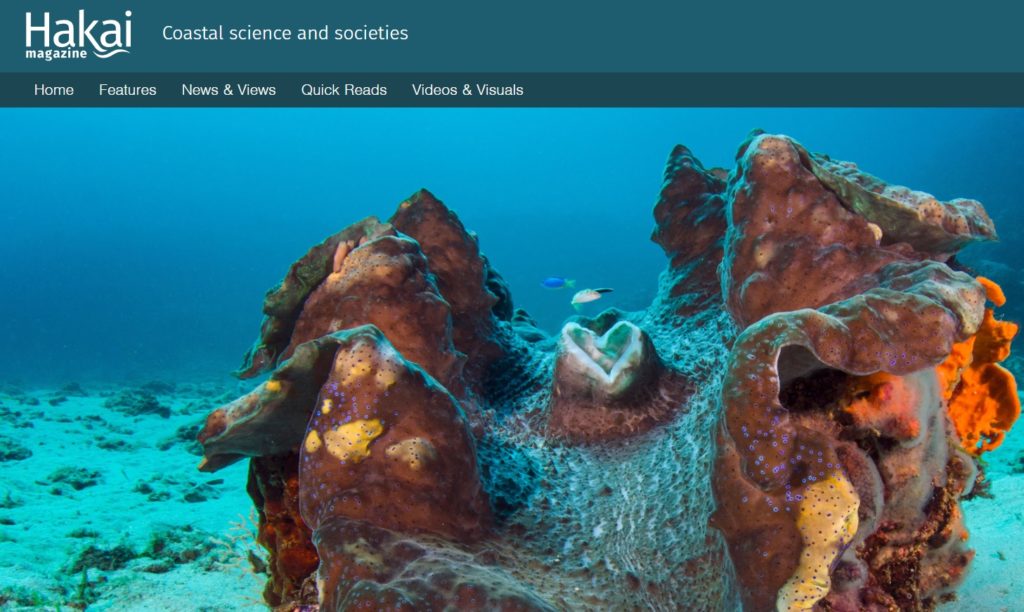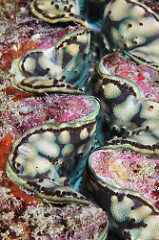Giant Love For Giant Clams
Love is a multi-faceted emotion, and famously the ancient Greeks, who were an extremely smart people, had several words for it: Eros, for erotic love, and Philia, for profound friendship and admiration, and a couple more for parental and sisterly and those kinds of love. So, somewhere among these loves I love giant clams. I love these massive mollusks, these clams which have gone the way of corals in evolution, depending on single-cellular symbiotic algae in their tissues for growth and survival. What unusual beasts, each the mass of a very large man, or more. Size impresses, certainly in this case.
I am in awe when I see a giant clam, and I wish them well in persisting in the shallow oceans of the Philippines in significant numbers.
This is not a mutual kind of love; They are large, imposing, equipped with a highly effective and evolutionarily advanced system for feeding their symbiotic algae with light (akin to fiber-optic cables). But they are not smart; They are cognitively limited below a glue-sniffing hamster, or a retarded earth-worm. They don’t even move, and just half-close their shell when a big fish or a diver swims too close to them. They have no sense of self, and no sense of agency in others, they are certainly not capable of love, of loving me or any other clam-enthralled marine biologist back. They, are beautiful, rare, biologically fascinating dunces.
It’s love for an organism which is so unlike us, and this alien nature of the giant clams brings about a significant part of my – and I assume that of many other biologists’ – fascination with them.
The Giant Clams of Bolinao
I had the great pleasure to spend 3 summers as a visiting professor at the Marine Science Institute of the University of the Philippines, Dilliman, which runs a giant clam breeding program. During my time there I taught some fantastic young marine biologists how to scuba dive safely, and wrote a number of papers and manuscripts about sea urchins, gobies, and even (mopping up an older project) teh failure of large-scale brain simulations.
And I’m also happy with my creative output during that time; I shoot ample videos and stills of the giant clams. Some of my images, footage and impressions were featured in Hakai magazine, an excellent magazine featuring thoughtful contributions about the world’s oceans and the animals & people in them:
Footage
The endless rows of clams in Bolinao are a truly alien type of city; and the 10s of thousands of clams in the shallow seagrass areas number as many as the citizens of a mid-sized city. This was an enthralling
I also got satisfying footage of an afternoon in the hatchery where the marine lab’s young biologists induced the clams to breed and generated a new generation of giant clam larvae.
Photographs
I also managed to get some nice still photographs. The mantles of the clams are amazingly colored, with the iridocytes and the symbionts giving them shades of brown, yellow, orange and green. These look like psychedelic wallpapers from the 60s, and the shapes of the clam’s orifices also add to the visual appeal. It was addictive to sneak up on the clams and to collect more and more patterns.


